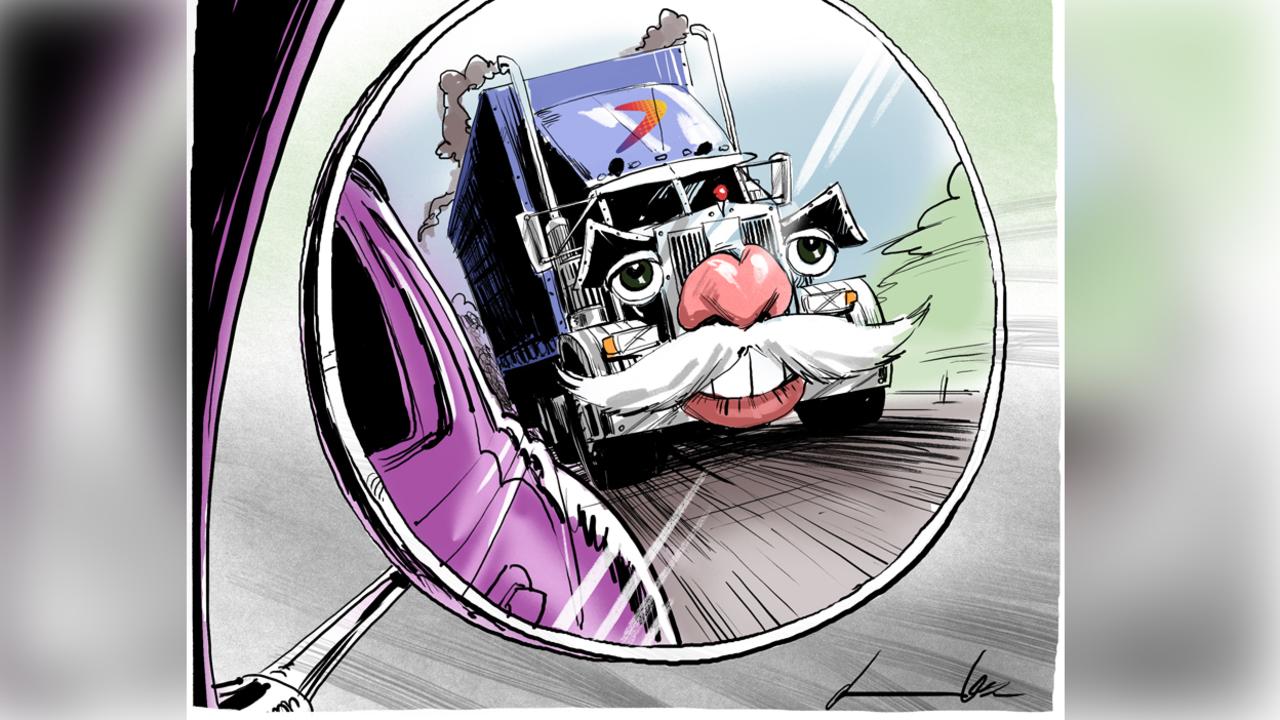Mike Wilkins in driver’s seat for AMP resurrection
Mike Wilkins has emerged in an extraordinarily strong position to attempt to lay the foundation to resurrect AMP.

Mike Wilkins has emerged in an extraordinarily strong position to attempt to lay the foundation to resurrect the $12 billion icon called AMP, as former chair Catherine Brenner’s belated departure underlined the cultural change battle ahead.
Wilkins knows as well as anyone AMP is in a fight for its own survival in the wake of the royal commission revelations, coupled with external market changes to industry structure.
Many would argue that in its present structure AMP is finished, with the royal commission destroying its remaining credibility.
Wilkins, it must be said, is a reluctant starter to the all-powerful chair, will keep his role as short as possible and knows full well the whole market is watching each move so the option for any games is limited.
But he has almost unprecedented shareholder backing to design a new board and select the next chief executive, which makes him the all-important one.
He is more the Singapore Prime Minister Lee Hsien Loong running a managed democracy than Australia’s Malcolm Turnbull dreading the next Newspoll.
The three directors up for re-election — lawyer Andrew Harmos, Holly Kramer and Vanessa Wallace — all intend to stand at next week’s annual meeting but logically should all be voted off the board.
Investors were gunning for Brenner, but surely all three are implicated by the same offences and arguably failed to do their duty to shareholders.
This said, the company has invited proxy advisers to reconsider their recommendations against them in light of Brenner’s departure.
Some shareholders argue Brenner’s head was the key and losing all the talent at once would make recovery difficult — an admittedly generous argument in their favour.
Brenner now faces a new battle as she is up for re-election for her Boral board seat in October, with the annual meeting just after the royal commission’s interim report in September.
The company’s problems are partly that it admitted to stealing from its clients and lying to the regulator about it, but that part is ancient history and most of the money has been repaid. But external to the commission it’s what is happening to the structure of the industry that is causing concern.
AMP’s rivers of gold used to be in life insurance and wealth protection, but these are now damaged goods. It sold its funds management arm, Henderson, and now royal commissioner Kenneth Hayne is raising serious doubts about the economics of the platform business.
Limits on fees or flat charges are now more likely rather than fees for funds under management when AMP delivers the same service to someone with $500,000 under management as it does to someone with $50,000 but charges 10 times more.
This change will also hit the banks.
Hayne was curious in questions to Linda Elkins, general manager of Colonial First State, stating: “You charge more against the prospect that you might do something wrong.”
It’s called risk management in the industry — others might call it a rort.
AMP has long-term investments that could prove very profitable, like its China investments. It paid $240 million in 2013 for the China Life joint ventures that are now valued at $1.4 billion and growing.
A strong infrastructure business is fed in part by its strong advice platform. But how strong will it be in the wake of last month’s battering?
Maybe Craig Meller’s “Goals 360” advice platform will be the answer.
AMP directors were in talks late on Sunday night before “accepting” the resignation of Brenner, which came after a barrage of criticism from shareholders effectively forced her departure.
Using all the right words, AMP carefully avoided any acceptance of the fact it was caught stealing from customers and lying to the regulator. Somehow those basic facts have gone missing in a flurry of words about good governance which were nothing but a joke, given Brenner should have stepped down the day she realised a couple of years ago that the company was stealing from customers.
Brenner said on Monday she was leaving to help restore trust in AMP, but went a long way short of accepting any responsibility for the scandals.
Instead, former general-counsel Brian Salter has had deferred pay cancelled and has taken the blame for the Clayton Utz revelations before the royal commission.
The board has pushed Salter under a bus and Brenner is leaving because she is responsible for governance.
Legal advice from a King & Wood Mallesons study cleared her and former boss Meller of any wrongdoing in relation to the Clayton Utz report into AMP misconduct.
The board, of course, claimed it was Salter, and not it that talked with Clayton Utz on the myriad drafts of its report. But the obvious question left unanswered was, on whose advice he was acting?
The long-running ASIC process required confidentiality but that was no excuse for Brenner to act earlier to help restore the falling empire. A break-up of the empire looms.
O’Dwyer’s team
Financial Services Minister Kelly O’Dwyer will roll out more details of her Financial Complaints Authority Tuesday, complete with details of the new operating company and how all financial services licensees need to register by September.
Panel members to support Helen Coonan include Choice’s Erin Turner, lawyers Alan Wein and Andrew Fairley and financial planner Claire Mackay. Now the operating company is in place, the board will decide who is the boss.
Dairy code
The ACCC has recommended a mandatory dairy industry code of conduct in its final dairy industry report, in a classic case of a solution looking for a problem.
The final report on Monday comes ahead of this week’s closure of Saputo’s $1.3bn acquisition of Murray Goulburn.
This means the Canadian giant will formally launch its sale process for the old MG Koroit processing plant, which will open the door to a new processor in Victoria’s dairy heartland.
Over the past two years MG has imploded, with milk under production falling by 45 per cent, from 3.6 billion litres to 1.9 billion litres. The Koroit plant capacity is more than 400 million litres.
The end result is that Saputo, with three billion litres under production, Fonterra (with two billion litres) and a new player (with at least 400 million litres) will be competing in southwest Victoria, which is the key growing market in Australia. This should mean the processors will be competing for suppliers, which others things being equal means farmers get paid more.
The Koroit sale was forced by the ACCC as a condition of the Saputo takeover.
But the ACCC report argues processors have all the market power and farmers little, which means the latter have an uncertain investment climate because final prices can be changed at the whim of the processor.
It went further, arguing that loyalty agreements and contracts with the farmers do not provide the clarity needed to give the farmers bargaining power.
A mandatory code of conduct would provide them with increased power because it holds the processors to behavioural constraints.
The ACCC also noted $1-a-litre milk is not such a bad thing for farmers because they still get farmgate prices no matter what the final retail price might be.
Processors and retailers get skinny margins on home brand milk and both earn more on branded milk.
Fonterra has told farmers it will release an options paper in July on its future ownership plans, including a potential Australian co-op. The ACCC study into the dairy industry came at the request of the government and will be followed by a parliamentary report into the industry.
Arguably the collapse of Murray Goulburn has shaken up the industry, so in some respects the horse has bolted, raising more questions about the merits of the review. Still, as an academic exercise, it was worthwhile. The complaint being a layer of regulation that won’t be necessary.




To join the conversation, please log in. Don't have an account? Register
Join the conversation, you are commenting as Logout